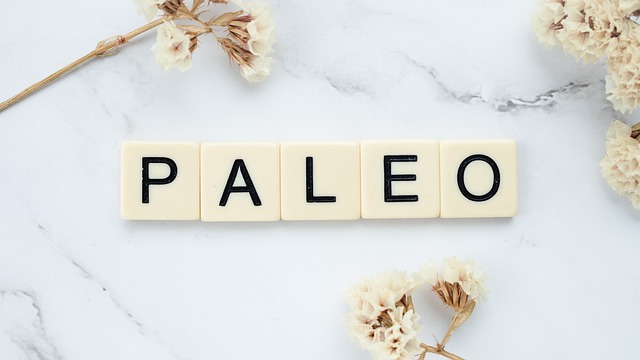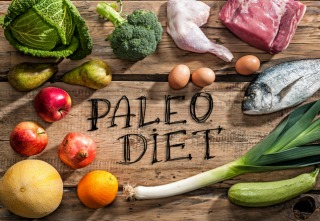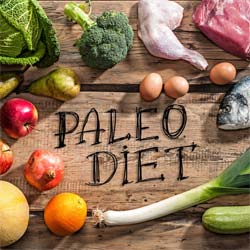
Paleo diet is not believed to prevent heart disease. While there are many benefits to the diet, some studies suggest that there is a risk of developing cardiovascular disease. The diet's effects on arterial distensibility (or insulin resistance), plasma insulin levels during oral glucose tolerance tests, total cholesterol, LDL and triglycerides, as well circulatory metabolism, were studied by researchers.
Increased risk of getting heart disease
A new study shows that eating the Paleo diet significantly increases the level of a blood biomarker linked to cardiovascular disease. Trimethylamine noxide, a naturally occurring organic substance produced in your gut, is a new study that shows how it affects the health of heart disease. A study of 44 Paleo-eaters and 47 Australians found that Paleo-eaters had higher levels TMAO. This increased TMAO level is associated with an increased risk of heart disease.
Four Australian researchers discovered that Paleo participants had elevated levels a compound linked with heart disease. Trimethylamine Noxide, which is made in the stomach by bacteria, is linked to the development and progression of heart disease. Eating a Paleo diet is also known to lower levels of beneficial bacteria, but further studies will be necessary to determine the exact role that this reduced carbohydrate intake has on heart health.
Inflammation at greater risk
Paleo is associated with heart disease. Paleo eaters have higher levels of interlukin-10 which is a signaling molecules released by immune cells. Research suggests that a lower level of interlukin-10 can indicate a greater risk for heart disease. High levels of interlukin-10 may counteract inflammation and protect blood vessels, but more research needs to be done to confirm the relationship.

Paleo diet is one that excludes grains, legumes, as well as vegetable oils. This diet is heart-healthy, but high in fat. It has both trans and saturated fats. This makes it expensive. Because it is high in meat and dairy products, some people cannot afford the Paleo diet. The high cost of these meats may be a deterrent for people on a lower income.
Increased chance of kidney disease
Paleo is popular among health-conscious individuals, but it has its drawbacks. This diet is high in cholesterol and emphasizes meat. Paleo prohibits the consumption refined sugars. They are high in empty calories. This sugar has been linked to obesity and heart disease as well as diabetes. The Paleo diet forbids legumes, and encourages meat consumption.
Paleo diet is good for increasing fiber intake. It also helps to reduce the waistline. High levels of fiber can lower cholesterol. Avoid egg yolks as they are a good source of phosphorus. Egg whites, which are high-quality proteins, are better for your renal health. Drinking lots of water can also reduce the amount of protein in your urine. The risk of developing kidney disease is still there.
Higher risk of developing heart disease in women
Paleo has enjoyed popularity for many different reasons. It is based on both the Mediterranean and Nordic diets and has many heart-healthy advantages. Due to its high animal fat allowance, it contains high amounts of saturated and transfats. Additionally, high beef consumption is linked to an increase in the risk of heart disease. Paleo is not for everyone. Paleo can also be expensive for low-income persons.
Studies show that saturated fats and cholesterol are not associated with an increased chance of heart disease in Paleo-eating women. The Paleo diet doesn't eliminate all junk food. However, it does reduce saturated fat. A recent review of the nutritional lines associated with heart disease concluded that there was insufficient evidence to link saturated fat to heart problems. Although a paleo diet is less varied than the traditional diet, it still has plenty of vegetables.
Effects on the gut bacteria

A new study suggests that Paleo diets may reduce the risk of obesity and heart disease. In the study, researchers compared TMAO levels of Paleo-followers and non-paleo followers. Research showed that high-protein diets supported the growth and survival of good bacteria as well as reducing the number of pathogenic microbes. However, high-protein diets can lead to micronutrient deficiencies, poor digestive health, and chronic disease development.
The researchers also found a strong relationship between TMAO levels and a person's diet. The findings indicated that a higher intake of animal-based protein, such as meat and fish, increased the production of TMAO in the blood. Participants' blood levels in TMAO were almost twice as high than those of controls during the study. The researchers also found that vegans had lower TMAO values than paleo-dieters. The researchers found that participants had significantly lower TMAO levels when they took carnitine.
FAQ
How much does it cost to study Culinary Arts?
There are many factors that influence the cost of learning culinary arts. For example, a 4-year degree costs about $40,000. A two-year associate's program may be less expensive at $5,000. The type of program you choose will determine the tuition rates. Prices for tuition are higher in private institutions than they are for public ones.
How can I cook like a professional?
Cooking is one way to be a better cook. You can increase your self-confidence by learning how to cook healthy foods for yourself and others. You can learn to cook at home if your goal is to become a good cook. The first step is to find out what kind of recipes you like. Next, you should read books on different cuisines, like Mexican, Chinese, and Italian. Finally, you can practice cooking different dishes until your skills are perfect.
What should a novice cook do first?
For beginners, it is best to begin with something simple like pasta, rice or soup. If you want to learn how to cook, go for a recipe book or YouTube video. It's much more fun to cook with someone you know. Have a group of friends cook, or cook together.
Are there any requirements to become a chef?
No. No. Many chefs began their careers learning by themselves. Some chefs even attended culinary school to gain more experience. However, most chefs prefer to attend culinary school because it gives them more opportunities to learn and grow professionally. Culinary schools offer students hands-on training, which helps them build valuable skills and improve their cooking knowledge.
Where can I find online cooking classes for free?
Numerous websites offer free cooking lessons. YouTube can be searched for videos showing you how to make different meals. You can access thousands of recipes from some websites. While you may have to pay a monthly charge, these websites allow you to try out the recipes for 30 days for no cost.
Where can I find high-quality kitchen equipment?
High-quality kitchen equipment can be purchased online. You can find all kinds of kitchen tools on a variety of websites. Be sure to read customer reviews before you buy any kitchen equipment. If you have similar items to purchase, ask your friends and family if they would recommend them.
Do I have to learn how to cook with my children?
Yes! Yes, kids love to help in kitchen. It's fun and teaches kids responsibility as well as teamwork. From washing vegetables to chopping onion, children can help. If your children follow safe practices when handling knives, they will enjoy helping you cook.
Statistics
- In the United States, the category is estimated at $23.2 billion annually and is growing faster than the market. (washingtonpost.com)
- You'll be amazed that over 90% of CIA students receive scholarships and grants to finish their culinary studies. (ischoolconnect.com)
- under 10 Kids have been taught that there is special food just for them, and Fiese says that 10 percent of kids will throw a tantrum if they don't get the food they want. (washingtonpost.com)
External Links
How To
How to cook your steak
The thickness of any meat will dictate the cooking method. Thicker steaks, for example, are better cooked at low heat while thicker steaks require higher temperatures.
They will lose their flavor if they are overcooked. And remember always to remove the steak from the pan when it's done - this way, you won't burn yourself.
Cooking time will depend on the size of your steak and the desired level of doneness. These are some guidelines:
Medium Rare: Cook until medium-rare, which is when the internal temperature reaches at least 145degF (63degC). This will take between 3 to 5 minutes per side.
Medium: Cook until medium, which means the internal temp reaches 160degF (71degC). This normally takes around 6 minutes per side.
Good Cooking: Cook the meat until it is done. This means that the internal temperature reaches 180F (82C). This takes between 8 and 12 minutes per side.